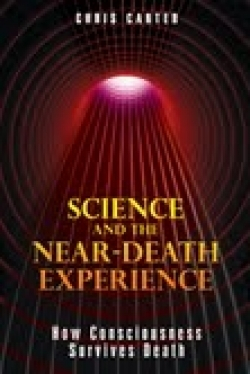Science and the Near-Death Experience
How Consciousness Survives Death
Debate over whether there is such a thing as life after death has raged for millennia. Since Neanderthal times, man has believed in such survivals, as is apparent from burials and tombs containing the deceased’s worldly goods or provisions for an afterlife. Author Carter, a philosopher holding degrees from Oxford University, has put together a compendium of scientific arguments to support the survival of consciousness after bodily death—a notion that has been staunchly rejected by many members of the scientific community.
Carter looks at the categories of objections to the validity of the near-death experience (NDE), the quality of the arguments, and the evidence arguing in favor of survival. The result is a cogent and lucid discourse asserting that, according to the evidence, consciousness not only survives death but exists independent of the brain through which it operates—much as a radio program, existing independently of a radio, does not cease to exist if the radio breaks.
Many objections to the idea of life after death, says Carter, stem from classical physics: the materialist argument that “all events have a physical cause.” By extension, the materialist view also holds that there is no such thing as consciousness or free will; an objective description of consciousness is merely “the movement of particles taking place in one’s brain.” Other objections stem from a mindset that regards survival after death as a religious or superstitious notion rather than as a possibility supported by the findings of quantum physics.
Readers are treated to clear and specific rebuttals of various theories: the “dying brain,” the effects of drugs or anoxia on the brain, and other arguments put forth by naysayers—as well as compelling case studies of people who have gone through an NDE, including blind people whose experiences included visual elements. Also discussed are deathbed visions and how they relate to the argument; the effects of culture and religious background and beliefs on the quality and elements of the NDE; corroborating factors; and the effects that NDEs have on those who have come back to tell about their experiences.
Carter also points out that those who protest in the face of supporting evidence are clinging to belief, not science. Ironically, he says, many come from the field of philosophy, where one might expect a more open mindset. Much of the support comes from physicists and other scientists who have interpreted the evidence within the framework of quantum physics and decided that life after death is indeed possible. A fascinating read for anyone interested in life after death, science, and the intersection of the two.
Reviewed by
Marlene Y. Satter
Disclosure: This article is not an endorsement, but a review. The publisher of this book provided free copies of the book and paid a small fee to have their book reviewed by a professional reviewer. Foreword Reviews and Clarion Reviews make no guarantee that the publisher will receive a positive review. Foreword Magazine, Inc. is disclosing this in accordance with the Federal Trade Commission’s 16 CFR, Part 255.

